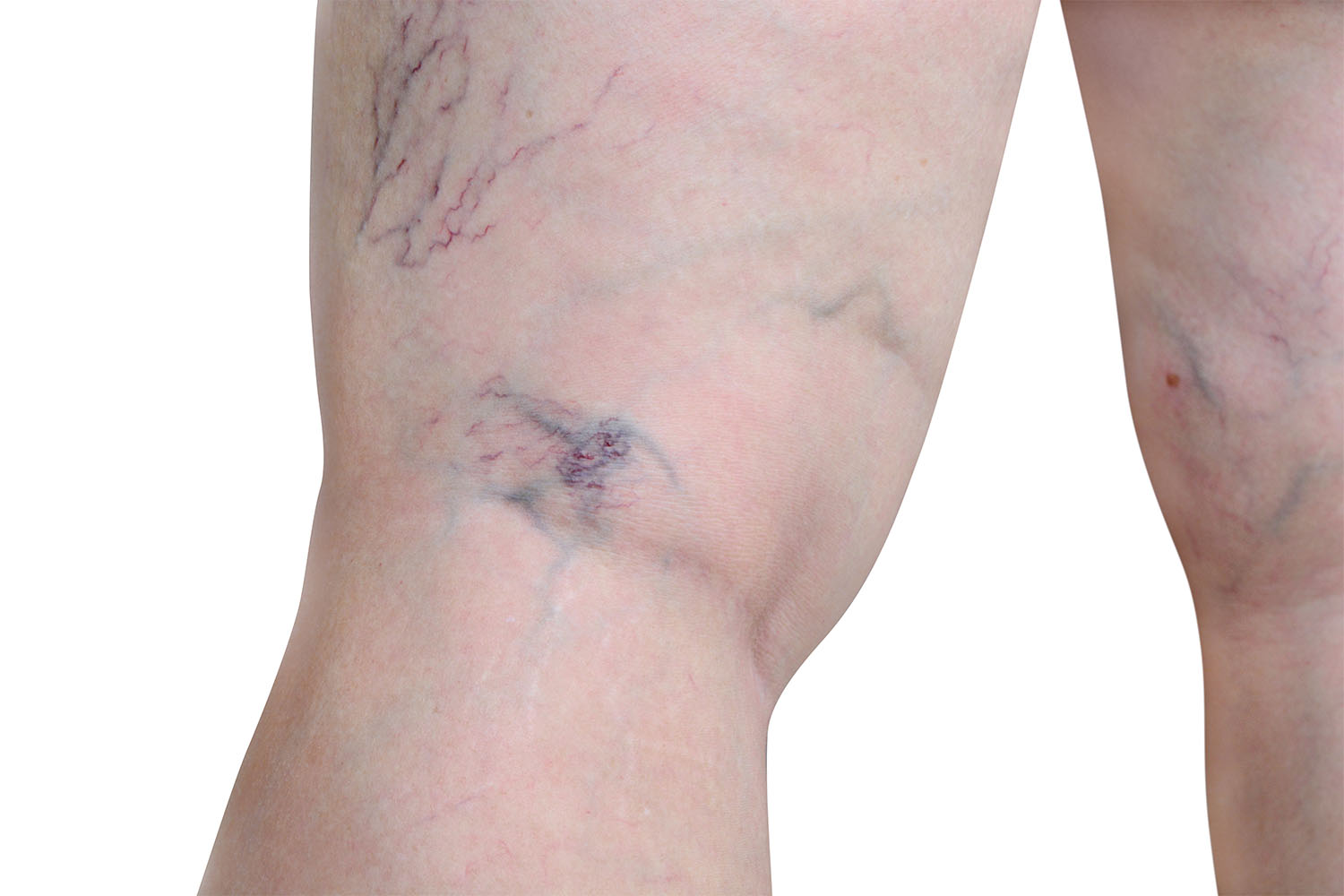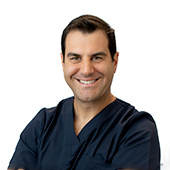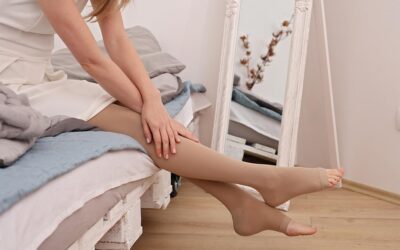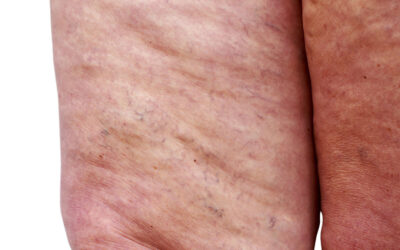Varicose veins often show up behind the knee and the outer thigh. This is probably the most common presentation to a Phlebologists clinic, and it affects women and men of all ages. The condition is known as the lateral subdermic venous system.
This embryological leftover of superficial veins are dormant through birth, and gradually progresses through puberty and into adulthood. Many patients in their 20s present to us complaining of large veins in the thighs and behind the knees. They tend to get larger with age and we see many patients with not only varicose veins but this thigh system as well, in their 40s, 50s, 60s, and 70s.
These veins are mostly just beneath the skin and are a blue-purple colour. They are referred to as subdermal veins meaning underneath the skin (or dermis). These subdermal blue-purple veins spread around, even communicate with normal veins and ultimately perforate through the muscle to connect to deep veins. They are often referred to as feeders as they feed spider veins, the very fine thread veins that lie right at the skin surface and are coloured either red or blue. So, the veins behind the knee (lateral subdermic venous system) are a collection of both dermal and subdermal veins, connected to the underlying deep veins via perforators.
Conservative Treatment
The most widely used conservative treatment for these veins is wearing compression stockings.
The subdermal veins will expand over time and blood will begin to pool and spread into other veins. For this reason, compression stockings can relieve (although not permanently fix) the problem. When compressed by a stocking, the vein walls can’t flex enough to enlarge in diameter.
Compression helps internal pressure push the blood along the incompetent length of the vein instead of allowing the vein to swell with blood. However, you can see how this is imperfect and not a permanent fix. As soon as you remove pressure stockings the pooling of blood begins again. But for temporary support and relief from varicose veins, keep compression stockings in mind.
Treatment of Varicose Veins Behind the Knee
The lateral thigh venous subdermic system is treated predominantly with direct vision sclerotherapy. However, when the veins are larger and more pronounced, disappearing deeper below the skin, ultrasound guided sclerotherapy is essential. Perforators linked to these systems can be treated both with a combination of ultrasound guided sclerotherapy and tumescent perivenous compression but in some cases, medical-grade adhesive is used to seal larger diameter perforators.
What if I don’t treat this problem correctly?
The most important side effect of incorrect treatment of this thigh and knee system is a condition referred to as telangiectatic matting. This is the appearance of more and more spider vein clusters due to the underlying feeder veins still leaking into the surface. Ensure that an experienced Phlebologist who can recognise this assess and treat you.
What if there are larger veins feeding this area?
It is important to note that the problem may not be just local. The original feeding vein may start further up the thigh or even the groin. It is therefore recommended to check the leg with a duplex ultrasound and rule out any other feeding source – otherwise more varicose veins will appear from that same source. A Phlebologist and vascular sonographer can arrange this for you.
Modern treatments for varicose veins are minimally-invasive and allow patients to walk out of the treatment and get on with their day with minimal aftercare required.
The most common modern vein treatments seal closed the diseased section of the vein by irritating/injuring the inside of the vein. Blood flow reroutes to nearby blood vessels. The sealed vein hardens, then heals over time. Treatments that irritate/injure the varicose vein so that it heals do so using different mechanisms: by injecting a sclerosant (sclerotherapy), activating a laser fibre inside the damaged section of the vein (endovenous laser ablation), activating a thermal fibre (radiofrequency ablation), or injecting a medical superglue into the vein (VenaSeal).
Varicose veins may vary in size. For large-diameter veins, treatments like Endovenous Laser Ablation or Radiofrequency ablation may be used. For spider veins that have a narrow diameter, sclerotherapy may be the right choice. It’s also possible that a combination of sizes may present themselves and a combination of treatments may be needed.
The ultrasound performed by your phlebologist or vascular sonographer will identify the parameters of your condition. They will use the diameter, location, and severity of the varicose vein to determine the best-suited treatment.
Key Takeaways
- Varicose veins and Subdermal Veins occur commonly behind the knee, but everywhere else on the legs too: the thighs, ankles, feet, even groin.
- When a section of vein valves stops working, the blood pools, swelling the width of the vein, blood leaks backward, and the vein becomes incompetent at returning blood to the heart.
- Treatments such as sclerotherapy, endovenous laser ablation, radiofrequency ablation, VenaSeal, and more can be used to permanently treat varicose veins.






